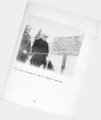| OCR Text |
Show With the Supervisors approval, I carried out the explosive experiment using common bOQp dynamite. The area chosen was the annual cornice on the North Peruvian ridge. I successfully removed this cornice twice during the season, with the release of large slides and elimination of hazard to the approaches to a favorite Alta run. I learned also that there would have to be improvements in equipment and technique before the method could be employed extensively. Common dynamite proved to be an unsatisfactory explosive, subject to deterioration from cold or damp, awkward to handle and store, and lacking in shock power. Electrical detonation of the charges was satisfactory but I found that we needed a lighter, more portable type of wire and a smaller blasting machine. On the basis of this experimental work, it was decided to carry out a larger program during the season. The Salt Lake Winter Sports Association solved one important problem by agreeing to furnish the necessary labor to transport explosives to the firing points. The equipment difficulties wore solved with a pocket-sized blasting machine and a light flexible type of wire. The Wasatch Forest was also successful in obtaining an explosive with desirable characteristics. This was tetrytol, a military demolition. It was supplied in two forms. One was a series of blocks joined by primacord making a chain about ten feet long and weighing twenty pounds. The second was separate half-pound blocks. In both cases, the explosive was dry, insensitive to cold or damp, and stable to handle or store. Its high rate of detonation satisfied the primary requirement of maximum shock power. The area chosen for the project was on Rustler Mountain extending from Rustler Face to West Rustler. The principal reason for this selection was that these slopes form one of the most dangerous and annoying avalanche hazards in the ski area. If successful, we could do more good there than in any other comparable location. Secondary reasons were that the lift would be available for transport at least part way to the firing points; the danger area could be adequately controlled for safety to the public; the firing points would be accessible except under conditions of the most extreme danger, and the location was ideally situated for observation and photography of the results. Our original intention was to plant a series of charges at ground level, high up on Rustler Face, and wire these charges to a remote firing point. However, this plan had to be modified as the equipment was not available until after winter had set in and a heavy snowpack was already in place. Various other problems of technique and procedure had to be worked out and improved as we went along. One of the most important was a safety plan to guard the public. We adopted the principle from the start that the time to set off our charges was when the snow was unstable, not when conditions were most convenient. This frequently meant operating on days when use of the ski area was heavy. The safety plan set up and which functioned successfully was as follows: -71- |








































































































